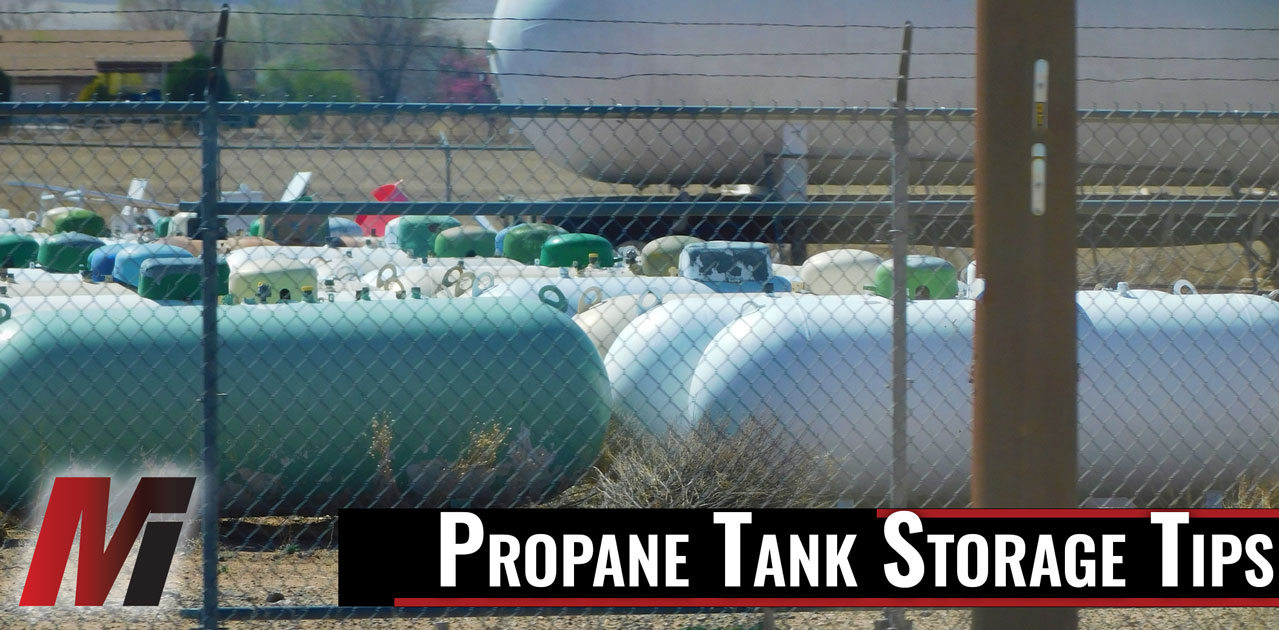Propane Tank Storage
Propane is a gas commonly used for heating and power. It is nontoxic, colorless, virtually odorless, and often compressed and stored as a liquid. Small, portable propane tanks are common throughout many industries and can be used as fuel for engine applications such as forklifts. Consumer propane tanks are often sold at convenience stores, grocery stores and department stores for barbecue grills and portable grills and stoves.Since propane tanks can lead to safety hazards, including fire or explosion, the National Fire Protection Association (NFPA) has developed a standard for proper propane tank storage. However, not all jurisdictions have adopted this standard, while others may have more extensive policies regarding propane tank storage. Be sure to check local laws.This article discusses the risks associated with propane tanks and precautions for avoiding dangers.
Potential Risks
The improper handling or storage of propane tanks can pose many risks to the safety and well-being of people and property. The following are ways in which propane tanks can be safety hazards:
- Propane is a flammable gas. A propane leak followed by an ignition could lead to an explosion. If a leaking tank is stored indoors, it could lead to a high concentration of explosive gas, increasing the severity of the fire or explosion. Valve damage—which can occur if a tank is improperly stored or handled—may also cause gas to leak out of the tank, adding fuel to the fire or explosion.
- Propane can exacerbate a dangerous situation. If a fire is already present within a building, improper propane tank storage could make the situation worse. It could add fuel to the fire or compromise exit routes. While propane tanks should have pressure relief valves to prevent explosions, they can also release flammable liquid into the air, potentially spreading fire.
- Bodily contact can cause burns. Contact with liquid propane can cause severe burns as it rapidly absorbs heat from the body.
Prevention
While propane can be dangerous, it is also extremely common, so it’s important to understand how to handle and store propane properly and what precautions to take when using it. Ensure proper handling in regards to:
- Storage orientation—Store propane tanks in their proper upright position to ensure the relief valve is oriented in the correct place. The commonly used tank for barbecue grills is typically positioned upright, while the commonly used tank for forklifts is typically positioned on its side. Any employee who handles a propane tank should be properly trained on storage orientation.
- Storage regulations—There are different storage guidelines depending on where a propane tank is stored, and different jurisdictions may also have varying rules and regulations. The following are ways in which propane tanks can be stored:
- Outdoor storage—Storing propane tanks outdoors is preferred. There are several guidelines for outdoor storage of tanks, including:
- They must be at least 5 feet from a door if there’s more than one exit.
- They must be at least 10 feet from a door if there’s only one exit.
- They must be at least 20 feet from a gas pump (this is only for convenience stores).
- They should be stored in a locked, vented metal enclosure.
- Outdoor cylinder exchange locations must also have at least a 10-pound fire extinguisher.
- Indoor storage—Storage inside buildings, in general, is limited due to the risk propane tanks pose. Empty cylinders should still be considered full when determining the number of propane tanks present on a property.
- Retail or buildings frequented by the public—Only tanks that are 1 pound or less can be kept inside a retail building or building with frequent public visitors. The maximum capacity for a single spot is 200 pounds, and only be 1,000 pounds can be stored in total. Sections of the 200-pound load must be kept at least 50 feet apart, and a sprinkler system must be in place when more than 200 pounds of propane are present.
- Buildings not frequented by the public—Industrial or storage operations can have 300 pounds of propane in a single location inside the building. Industrial operations can have additional 300-pound locations as long as they are 300 feet apart. Storage operations can have up to 10,000 pounds.
- Tank inspection—Tanks should be regularly inspected to identify any damage or rust. If any damage or rust is present, the tank should be removed from service.
- Filling operations—Only a qualified professional should fill a cylinder. Review any other local laws regarding filling operations.
Proper propane tank handling and storage can ensure safe operations. For more information,
contact us today.

